Cover Story
Collecting Guide: 7 things to know about paperweights
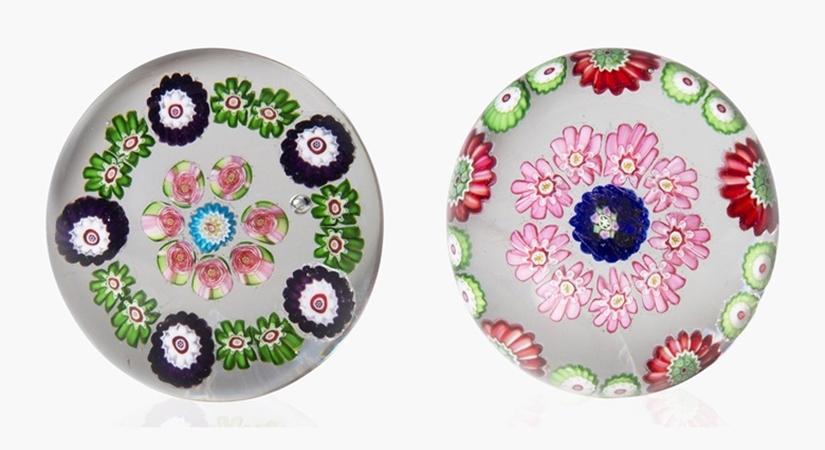
The best way to learn more about paperweights is to look at them carefully, preferably in person
ByIANSlife Features
December 20, 2020 (IANSlife) The experts at leading auction house Christie's share their advice on what to look out for when buying a paperweight. These overlooked and frequently gorgeous items — from dancing devils to rogue air bubbles — are a treasure according to their specialist Carleigh Queenth.
When did paperweights become popular?
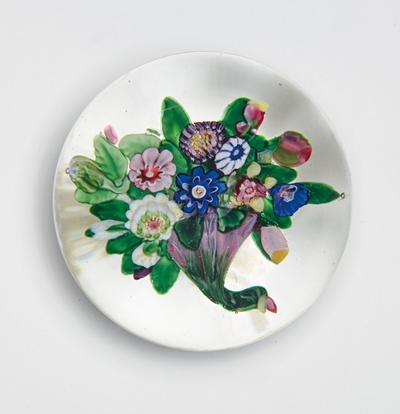
A Clichy glass cornucopia flat bouquet paperweight, mid-19th century. 3⅛ in (7.9 cm) diameter. Estimate: $4,000-6,000. Offered in The Collector: Property from Four American Collections on 16 October at Christie’s in New York
Glass paperweights first gained popularity in the mid-19th century after being displayed at various expositions, most notably the Great Exhibition of 1851 at London’s Crystal Palace. Marvels of artistic skill and also affordable, paperweights soon became the ultimate desk accessory, bringing flowers and other natural subjects that perished in the winter into the home — there may not have been flowers in the garden, but they could still surround you as you wrote your letters. Collectors during this period included Colette, Oscar Wilde and Empress Eugenie of France.
By the turn of the century, interest had waned, but in the 1950s artists like Paul Ysart and Charles Kaziun sought to rediscover the secrets to making glass weights, paving the way for hyper-realistic paperweight artists like Paul Stankard.
How are they made?
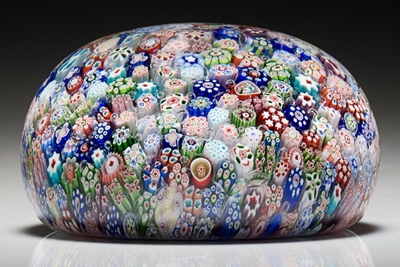
Dated 1846, initialed and dated on a single cane ‘b 1846’.
2⅞ in (7.3 cm) diameter. Sold for $2,125 on 20 Apr 2016, Online
Incredibly, everything inside the weight is also glass: the flowers, the salamanders, the insects — everything. Most of the weights in the Neustadter Collection, which was offered at Christie’s in 2016, were made either using millefiori canes or lampwork. Millefiori or ‘thousand flowers’ canes are produced by layering molten glass into a pattern in a fat cylindrical shape, then pulling the cylinder to create an elongated pencil-thin rod. When the rod is sliced, the pattern can be seen in the cross section. Millefiori weights consist of many patterned canes, either packed closely together or in various other arrangements.
Lampwork weights are made by melting small coloured glass rods over a torch or flame and using tools to manipulate the softened glass. Examples of lampwork include butterfly and flower weights and snake weights.
How easy is it to identify makers?
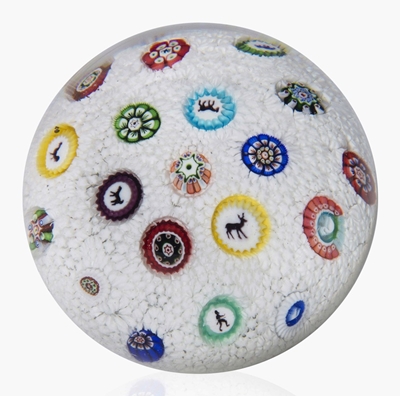
Dated 1848, initialed and dated on a single cane ‘b 1848’.
3⅛ in (8 cm) diameter. Sold for $10,000, 20 Apr 2016, Online
Nineteenth-century paperweights were made in Venice, England, Bohemia and the United States, but the real epicentre was in France. The most famous and sought-after examples came from Baccarat, Saint Louis, Clichy and Pantin.
Some weights have tiny canes included that help identify the maker and date. For example, the lot shown above has a small cane with the initial B and the date, 1848. Clichy has an easily identifiable rose cane that they use . The Saint Louis factory is the usual suspect if you see a ‘dancing devil’ silhouette cane in its compositions. For a novice to begin learning to identify the further subtle distinctions between makers, examining a variety of pieces in books and in person is recommended.
How important is condition?
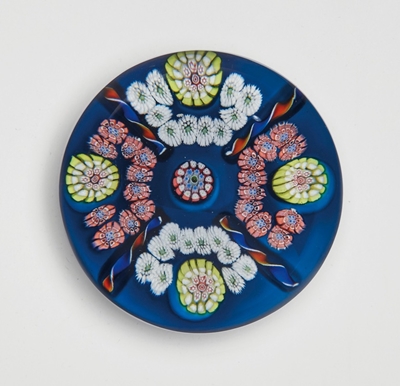
Mid-19th century, probably Saint Louis. 2⅞ in (7.2 cm) diameter. Estimate: $2,000-3,000. Offered in The Collector: Property from Four American Collections on 16 October at Christie’s in New York
When buying a weight, the condition and the size of the glass dome play a big factor for most collectors. Obviously perfect condition is preferable, but often a few scratches, minor bruises or nicks can be forgiven if there is enough glass in the dome to polish them out. Large, unintentional air-bubbles or distracting bits of kiln debris often put collectors off. Lastly, to many collectors, a well-centred design is essential.
Does size matter?
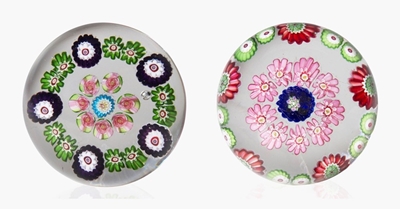
Two Clichy miniature concentric Millefiori weights, mid-19th century. 1¾ in (4.5 cm) diameter, both. Sold for $875 on 20 Apr 2016, Online
Most weights range in size from around 2½ to 3¼ inches, but then you enter the exciting world of miniature and magnum weights. Miniature weights are defined as those measuring 2 inches or less. Magnum weights, like the massive Pantin salamander weight, measure at least 3½ inches wide. The size of the glass dome is also a factor — the bigger the dome, the greater the magnification of the design within.
Are there many different types?
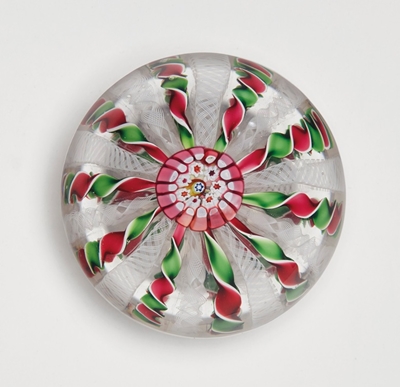
Mid-19th century, 2¾ in (6.9 cm) diameter. Estimate: $1,500-2,000. Offered in The Collector: Property from Four American Collections on 16 October at Christie’s in New York
Other popular types of weights include: carpet-ground weights, which are composed of closely-set canes that are identical in type and colour; macedoine weights, a type of weight consisting of a scrambled, twisted mixture of canes or cane fragments and latticinio; colour-ground weights, which are made by using a transparent or opaque coloured glass as the background for a weight; and crown weights, which are hollow weights that usually alternate swirling white and coloured filigree canes radiating from a central millefiori cane.
How can I learn more?
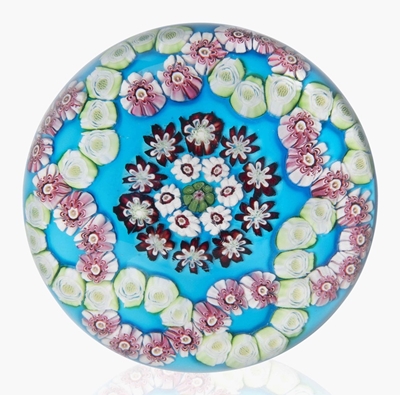
. 3⅛ in (8 cm) diameter. Sold for $5,000 on 20 Apr 2016, Online
The best way to learn more about paperweights is to look at them carefully, preferably in person. There are some fabulous collections to visit in the United States, including the collection of Arthur Rubloff at the Art Institute of Chicago; the Amory Houghton collection at the Corning Museum of Glass in New York; and the Bergstrom-Mahler Museum in Neenah, Wisconsin. Paul Dunlop’s The Dictionary of Glass Paperweights, An Illustrated Primer is also quite helpful for an aspiring paperweight enthusiast.
(This article is website exclusive and cannot be reproduced without the permission of IANSlife)
IANSlife Features can be contacted at ianslife@ians.in


